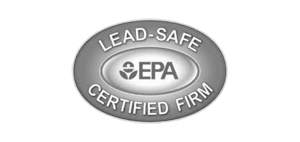Water damage is a common issue that homeowners face, whether it’s due to natural disasters, burst pipes, or leaky roofs. But how do you know if the damage is permanent? It’s essential to identify the signs of irreversible damage, so you can take necessary steps to prevent further harm to your property.
In this section, we will explore the possibility of water damage being permanent and provide valuable information on how to identify the signs of irreversible damage in your property.
Key Takeaways:
- Identifying the signs of irreversible water damage is crucial in preventing further harm to your property.
- Understanding the severity of the damage, its duration, the water source, and the affected materials can help determine the chances of permanence.
- Certain signs, such as mold growth and structural damage, can indicate irreversible water damage.
- In some cases, it may be necessary to seek professional water damage assessment to determine the permanence of the damage.
- Prompt action is key to minimizing the long-term impacts of water damage.
Understanding the Types of Water Damage
Before determining the permanence of water damage, it’s essential to understand the different types. There are three main categories: clean water damage, gray water damage, and black water damage.
Clean water damage is caused by water from sources such as pipes, faucet leaks, or rainwater. It is generally considered the least harmful type of water damage and is the easiest to clean up. However, if left untreated, clean water can quickly become contaminated.
Gray water damage is caused by water with slight contamination, such as from washing machines or dishwashers. If left untreated, gray water can become black water and cause severe health hazards.
Black water damage is the most dangerous type and is caused by sewage backups or floodwaters. Black water contains harmful contaminants such as bacteria, viruses, and fungi, which can cause severe health issues. The cleanup process for black water damage should always be left to professionals.
Understanding the types of water damage is crucial in determining the course of action required to restore your property. Depending on the type of water damage you have, cleaning and restoration techniques can vary significantly. By identifying the type of damage, you can determine the appropriate method for restoring your property and prevent any risks to your health and safety.
Assessing Water Damage Severity
Assessing the severity of water damage is crucial in determining the potential permanence of the damage. Different factors come into play when evaluating the extent of the damage, such as the water source, the duration of exposure, and the affected materials.
The first step in assessing water damage severity is identifying the water source. Water damage caused by clean water, such as a broken pipe, is easier to remedy and less likely to result in irreversible damage than damage caused by contaminated water, such as sewage backup.
The duration of exposure is another critical consideration in assessing water damage severity. If the water has been left standing for an extended period, it increases the likelihood of the damage being permanent.
Finally, the materials affected by the water damage must be evaluated. Some materials, such as hardwood floors, drywall, and carpets, are more susceptible to water damage than others.
It is essential to thoroughly assess the damage before taking any restorative actions. If the damage is beyond repair, it’s vital to recognize the signs of irreversibility to avoid ineffective and costly repairs. The table below provides a summary of the factors to consider when assessing the severity of water damage:
| Factors to Consider | Impact on Damage Severity |
|---|---|
| Water Source | Clean water vs. contaminated water |
| Duration of Exposure | How long the water has been standing |
| Affected Materials | Material susceptibility to water damage |
By evaluating these factors carefully, you will have a better understanding of the extent of the damage and the potential for the damage to be reversed.
Signs of Irreversible Water Damage
Water damage can pose serious risks to your property, and if left unaddressed, it can cause irreparable harm. Certain signs indicate that water damage is irreversible, and recognizing these can help you take necessary actions to minimize long-term impacts.
Mold growth: In damp environments, mold can flourish and spread rapidly, posing health hazards and damaging your property. If you notice mold growth, especially in places like ceilings, walls, and floors, it’s likely that water damage has caused irreversible harm.
Structural damage: Water damage can weaken the structure of your property and cause long-term damage. Signs of structural damage may include sagging walls or ceilings, warped floors, or cracks in the foundation.
Discoloration: Water damage can cause discoloration in walls, ceilings, and floors. Stains may indicate that water has seeped through into the building’s materials, causing irreversible harm.
Musty Odors: If your property has a musty odor, it is a sign that water has caused damage to the materials and foundation of the building, which may mean that the damage is irreversible.
If you observe any of these signs of irreversible water damage, it is crucial that you take swift action to minimize further harm. Timely action can minimize the risks and mitigate the damage done to your property.
Professional Water Damage Assessment
When water damage occurs, it’s not always easy to determine the extent of the damage by yourself. That’s why professional water damage assessment services are available to help you make informed decisions. Professional is the keyword here, as relying on just anyone can lead to inaccurate results and costly repairs.
A water damage assessment conducted by a trained expert involves a thorough evaluation of the affected area. Using advanced tools and techniques, a professional can assess the severity of the damage and determine the best course of action for restoration. They can also identify any areas that may have been overlooked, ensuring that no potential issues are left unaddressed.
So, when should you seek professional assistance for water damage assessment? If the damage is extensive or poses a risk to your health, it’s best to hire a professional. Additionally, if you lack the knowledge or tools to accurately evaluate the damage, seeking professional services is recommended.
| Benefits of Professional Water Damage Assessment: |
|---|
| Accurately evaluate the severity of water damage |
| Determine the best course of action for restoration |
| Identify any potential health hazards |
| Ensure all areas of damage are identified and addressed |
Overall, professional water damage assessment is an essential step in determining the permanence of water damage. By relying on the expertise of trained professionals, you can ensure that your property is restored to its pre-damage condition, minimizing the long-term impacts of water damage.
Conclusion
To sum up, water damage can have lasting effects on your property if not addressed promptly and effectively. By knowing the signs of irreversibility, assessing the severity of the damage, and understanding the various types of water damage, you can make informed decisions about the necessary actions to take. Whether you choose to seek professional help or implement restoration measures yourself, timely action is vital to minimize the long-term impact of water damage.
Remember, prevention is always better than cure. Ensure you take necessary precautions against potential water damage, such as regular maintenance of plumbing systems, adequate insulation, and proper drainage. Being proactive can save you both time and money in the long run.
Lastly, always reach out to reputable experts for advice and assistance to ensure the safety and integrity of your property. With their skills and experience, they can provide a thorough assessment and recommend the best course of action for your unique situation.
FAQ
Is water damage permanent?
Water damage can be permanent depending on various factors. It is important to assess the severity of the damage, the type of water involved, and the extent of the affected materials to determine its potential permanence.
What are the different types of water damage?
There are three main types of water damage: clean water damage, which poses no immediate threat to humans; gray water damage, which may contain chemicals or contaminants; and black water damage, which is highly unsanitary and hazardous. The type of water damage can affect the permanence of the damage.
How do I assess the severity of water damage?
Assessing the severity of water damage involves considering factors such as the source of water, the duration of exposure, and the materials affected. It is essential to evaluate the extent of the damage to determine its potential permanence and make informed decisions about restoration and mitigation measures.
What are the signs of irreversible water damage?
Some signs that indicate water damage may be irreversible include mold growth, structural damage (such as sagging ceilings or walls), discoloration of materials, and musty odors. These indicators suggest long-term damage and may require professional attention for proper remediation.
When should I seek professional assistance for water damage assessment?
It is advisable to seek professional help for water damage assessment when the severity of damage is significant, or if there are indications of potential permanence. Professionals have the expertise to accurately assess the extent of the damage, determine its reversibility, and recommend appropriate restoration measures.









